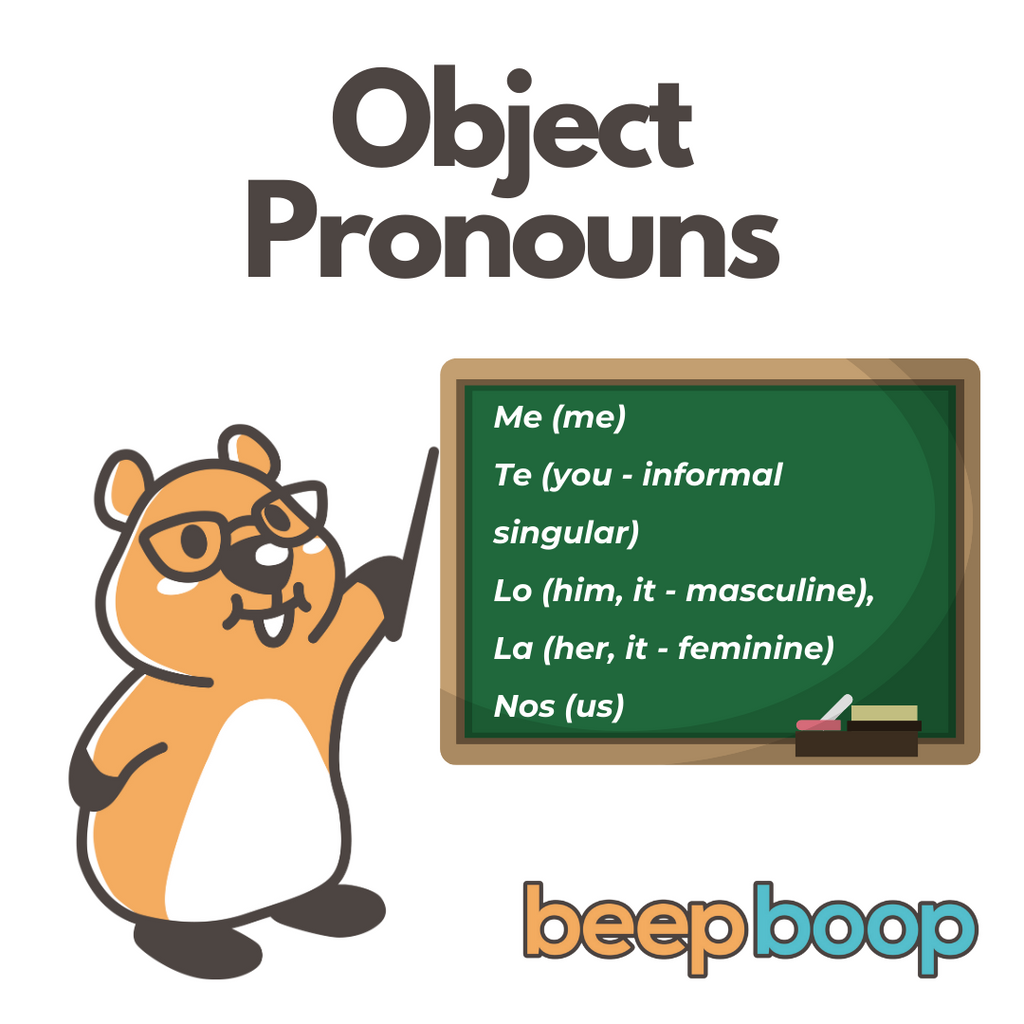Welcome to another exciting post on BeepBoop's Blog, where we make learning Spanish fun and easy! Today, we're diving into the world of object pronouns. These little words play a big role in helping us construct sentences in Spanish. Read the below and then book a free Drill to practice live with our native Spanish instructors. Also, check out TV Club: Episode 16 of Destinos where "Object pronouns" is covered in depth. So, let's get started!
What are Object Pronouns?
In Spanish, object pronouns are used to replace nouns that are the direct or indirect objects of a verb. This saves us from repeating the same nouns over and over. For example, instead of saying "I see Maria" and "I am talking to Maria," we can say "I see her" and "I am talking to her."
Types of Object Pronouns
Spanish has two types of object pronouns: Direct Object Pronouns and Indirect Object Pronouns.
Direct Object Pronouns
These pronouns replace nouns that directly receive the action of the verb. Here’s a list:
- Me (me)
- Te (you - informal singular)
- Lo (him, it - masculine), La (her, it - feminine)
- Nos (us)
- Os (you - informal plural)
- Los (them - masculine), Las (them - feminine)
Example: "Veo el libro" (I see the book) becomes "Lo veo" (I see it).
Indirect Object Pronouns
These pronouns replace nouns that are the recipients of the action. Here’s the list:
- Me (to/for me)
- Te (to/for you - informal singular)
- Le (to/for him, her, it, you - formal singular)
- Nos (to/for us)
- Os (to/for you - informal plural)
- Les (to/for them, you - formal plural)
Example: "Doy un regalo a Maria" (I give a gift to Maria) becomes "Le doy un regalo" (I give her a gift).
Positioning of Object Pronouns
In Spanish, object pronouns usually come before the verb. However, they can be attached to the end of an infinitive, gerund, or affirmative command.
Example:
- Before the verb: "La veo" (I see her).
- Attached to an infinitive: "Voy a verla" (I am going to see her).
A Common Mistake: Leísmo, Loísmo, and Laísmo
- Leísmo is using 'le' instead of 'lo' or 'la' for direct objects.
- Loísmo and Laísmo are the reverse, using 'lo' or 'la' instead of 'le' for indirect objects.
These are common in some regions but considered incorrect in standard Spanish.
Practice Makes Perfect
The key to mastering object pronouns is practice. Try replacing nouns with object pronouns in your Spanish sentences. Listen to how native speakers use them in conversations and try to imitate them.
Conclusion
Object pronouns might seem challenging at first, but with practice, they become an integral part of your Spanish speaking skills. Remember, language learning is a journey, and every step, no matter how small, is progress.
Happy learning, amigos! Stay tuned for more posts from BeepBoop's Blog. ¡Hasta la próxima!
